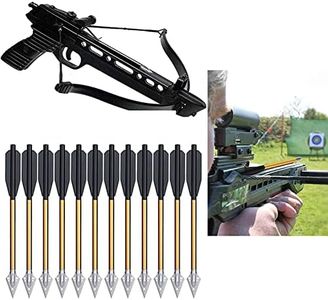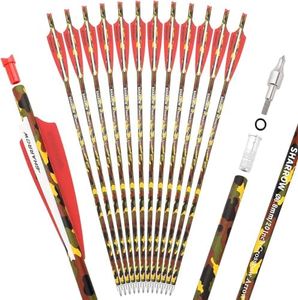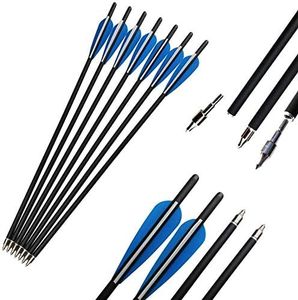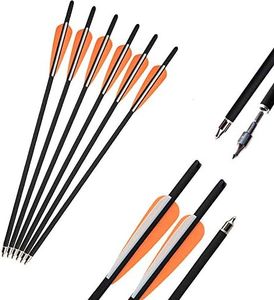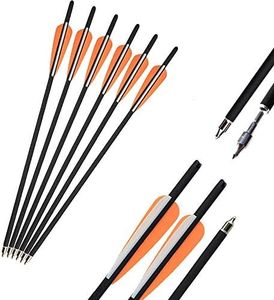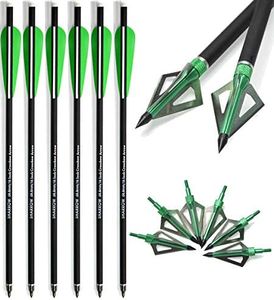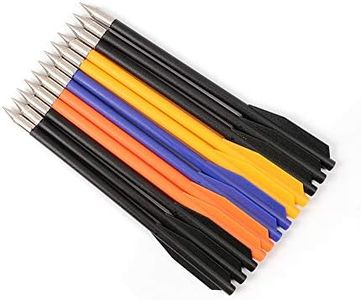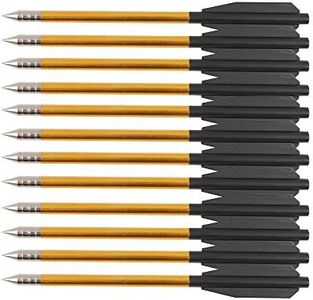We Use CookiesWe use cookies to enhance the security, performance,
functionality and for analytical and promotional activities. By continuing to browse this site you
are agreeing to our privacy policy
10 Best Crossbow Bolts
From leading brands and best sellers available on the web.Buying Guide for the Best Crossbow Bolts
Choosing the right crossbow bolts is essential for both performance and safety when using your crossbow. The ideal bolt should match your crossbow’s specifications and your intended use, whether it’s target shooting or hunting. Picking the right product involves understanding a few critical features, each of which influences speed, accuracy, and durability. By learning about these key aspects, you can confidently select bolts that give you the best results and an overall better shooting experience.LengthThe length of a crossbow bolt refers to the measurement from the nock to the tip (excluding the point). This is important because using the correct length for your crossbow helps ensure safety and performance. Bolts are generally categorized into short (16–18 inches), medium (18–20 inches), and long (20–22 inches or more). Shorter bolts can be lighter and faster but may be less stable in flight, while longer bolts can provide better accuracy and stability but might travel a bit slower. Your crossbow’s manufacturer usually recommends the ideal bolt length—go with that, as using bolts that are too short can be dangerous and using bolts that are unnecessarily long can reduce effectiveness.
WeightBolt weight is measured in grains and usually includes both the shaft and the field point or broadhead. This matters because bolt weight impacts speed, kinetic energy, and penetration. Lightweight bolts (under 400 grains) fly faster and flatter, which can be advantageous for target shooting, but may provide less penetration on impact. Medium weight bolts (400–450 grains) offer a balance of speed and power, making them versatile for most uses. Heavy bolts (over 450 grains) provide the most kinetic energy and penetration, which is preferred for hunting bigger game. Choose weight based on your primary purpose—lighter for targets and heavier for hunting.
MaterialBolts are typically made from carbon, aluminum, or composite materials. This affects their durability, straightness, and overall performance. Carbon bolts are popular because they are lightweight, strong, and provide good accuracy—great for frequent users and hunters. Aluminum bolts are a bit heavier but can bend upon impact, making them more suitable for casual or practice shooting. Composite materials attempt to combine durability and cost-effectiveness, but are less common. Choose carbon for versatility and resilience, aluminum for budget or occasional shooting, and composite if you’re seeking a middle ground.
Fletching (Vaned Feathers)Fletching refers to the small vanes or feathers at the back of the bolt, which stabilize its flight. The size and shape of the fletching can affect accuracy and consistency. Short, low-profile vanes are suitable for fast, flat shots and are less affected by wind, making them ideal for indoor or competition shooting. Larger, higher profile fletching stabilizes the bolt more effectively, which helps with accuracy but can be slowed by wind resistance—this is often preferred for hunting. Assess where you will mostly shoot—indoors/competitions may need short vanes, while outdoors or hunting would benefit from larger ones.
NocksThe nock is the component at the rear of the bolt that interfaces with the crossbow string. There are different types, such as half-moon, flat, and capture nocks. The type is important for safety and ensuring consistent shots. Half-moon and capture nocks require correct alignment on the string, while flat nocks are easier to load and more forgiving. Always use the type recommended by your crossbow manufacturer, as using the wrong type can lead to misfires or damage. Check your crossbow’s manual to confirm the compatible style.
Spine (Stiffness)Spine, or stiffness, determines how much a bolt flexes during flight. It’s essential because the correct spine ensures the bolt flies straight and accurately. Bolts with higher spine ratings are stiffer and suitable for high-powered crossbows, while lower spine ratings (more flexible) can work with low-powered crossbows. If you are using a high-speed, high-draw crossbow, choose stiffer bolts. For lower poundage crossbows, a more flexible spine is adequate.
